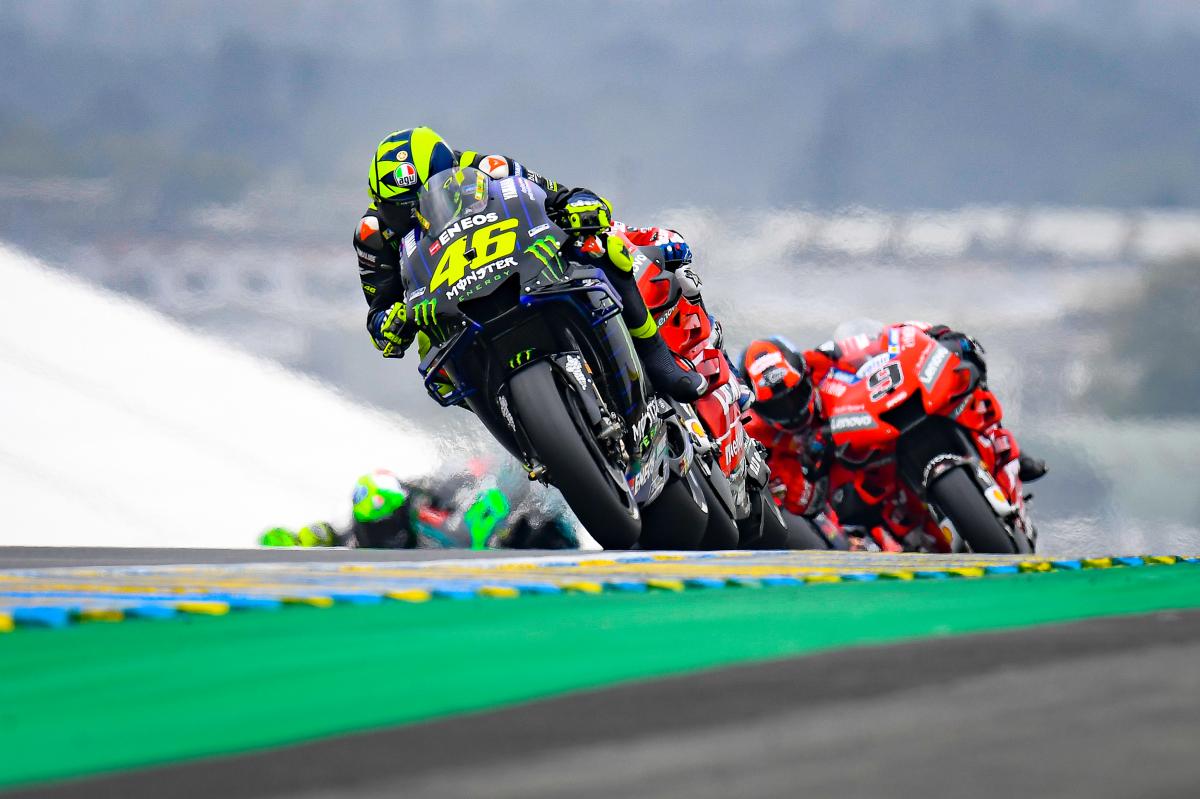


The fact that MotoGP uses a very late pit lane exit onto the track, right on the outside of the corner is also a problem. It’s not just the camber and location of Turn 3 which is an issue.

I think it was a cold tire, so totally my mistake, I needed to wait a little bit more.” “I just went to put the knee down and I just crashed straight away. “I just switched from the soft wet tire to the medium wet tire, and I was too optimistic, I just pushed too much in Turn 3,” the Spaniard said. Viñales made that mistake himself in the morning, after switching from the soft wets to the medium wets. Right side straight away is good, but the left side needs two or three laps.” Because the first laps it looks like you are on ice, honestly, especially on the left side. “I would not say a disaster, but the correct word is, I would say difficult. “It has been difficult,” Maverick Viñales told us. When you make 24 hours with 70 cars the track becomes old very early.” “The third factor is this track is used for the car racing in the 24 Hours, and the part that cars use has less grip. Then there was the fact the track is used so frequently by cars, which wears the track in a way which is anathema to motorcycles. You have to lean the bike on the left but with negative banking it’s a problem.” Negative banking, this is a disaster for the bike. “The second thing is the banking is opposite. The next issue was the camber of the track at that point. “First of all, it’s the first corner on the left after two corners on the right, a long straight, and two more corners on the right, so with low temperatures the tire is cold so there is not a lot of grip.” Every lap when you arrive you’re very worried,” the Italian veteran said, before enumerating the dangers to be faced there. Valentino Rossi summarized the issues with the first part of the Dunlop Chicane. That is a long time for the wind and the rain to suck the heat out of the tire.

Turn 3 is the first time the riders use the left-hand side of the tire for the best part of 40 seconds, since Turn 12 at the Garage Bleu esses. Or rather, the weather combined with the layout of the track. Of the 38 riders who crashed, only two required medical attention, and only Moto2 rider Yari Montella was unfortunate enough to crash hard enough to actually fracture a wrist and be ruled unfit.īut the biggest factor is of course the weather. Why so many crashes? First of all, because there are a few low speed corners where you can get away with crashing with a relatively low chance of injury. Other tracks have had more – the record in recent years was 155 at a cold and rain-sodden Valencia in 2018 – but three figures are the rule at Le Mans, rather than the exception. Last year, on a weekend where there were 100 crashes over all three days, there were only 38 crashes on Friday, six fewer than this year.Īnd Le Mans is the only track where crashes number over 100 during a MotoGP event. It was an expensive Friday, even by Le Mans standards. But then again, it didn’t really cost the OSI six million dollars to rebuild Steve Austin to make him better, stronger, faster. So no, the financial damage done on Friday at Turn 3 probably didn’t quite reach the million dollar mark, even taking the exchange rate into account. A pedant might quibble with the name – the crashes were nearly all low-speed low sides, meaning damage would have been relatively limited, and most were in the Moto3 class, where damage is even less due the combination of light bikes and the lack of aerodynamic appendages which snap off at the merest sniff of gravel. With that in mind, perhaps they should rename Turn 3 the Million Dollar Corner. Given how quickly the costs of a crash can mount up – even a slow crash can cost north of €20,000 to replace carbon fiber fairings, footpegs, and levers.Īnd if fuel tanks, exhausts, wheels, brake discs or (heaven forfend) frames and swingarms have to be replaced, costs can rapidly approach six figures. Some 19 of those 44 crashes happened at Turn 3, the first left hander of the Dunlop Chicane. In fact, six of the nineteen rounds held in 2019 had fewer crashes over all three days than Le Mans did on Friday, and another five rounds only had a handful more. To put that into perspective: at the first race in Qatar, there were 37 crashes over all three days of the first Grand Prix, and 27 over three days of the Doha round at Qatar. Bikes in the three Grand Prix classes hit the deck (and the gravel trap) 44 times on Friday, a colossal number, even for Le Mans. It was an expensive first day at Le Mans.


 0 kommentar(er)
0 kommentar(er)
